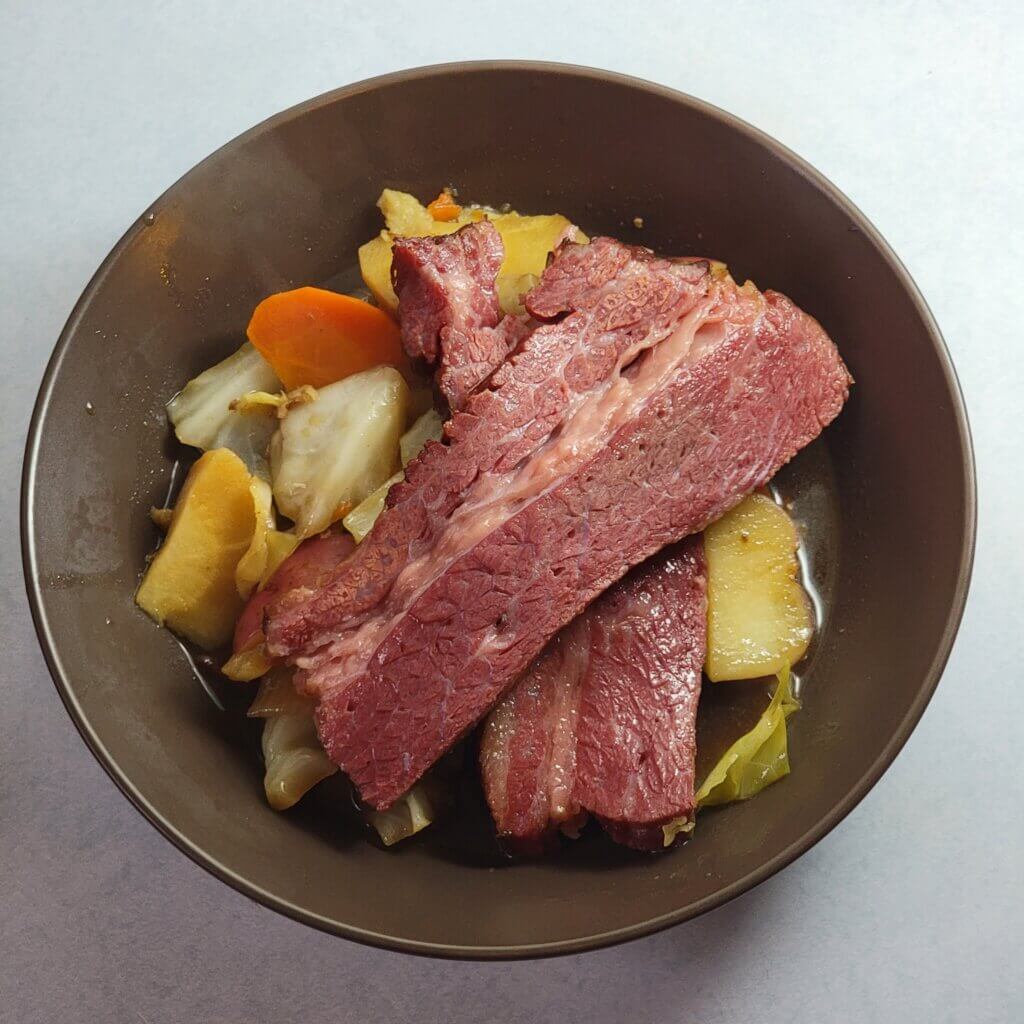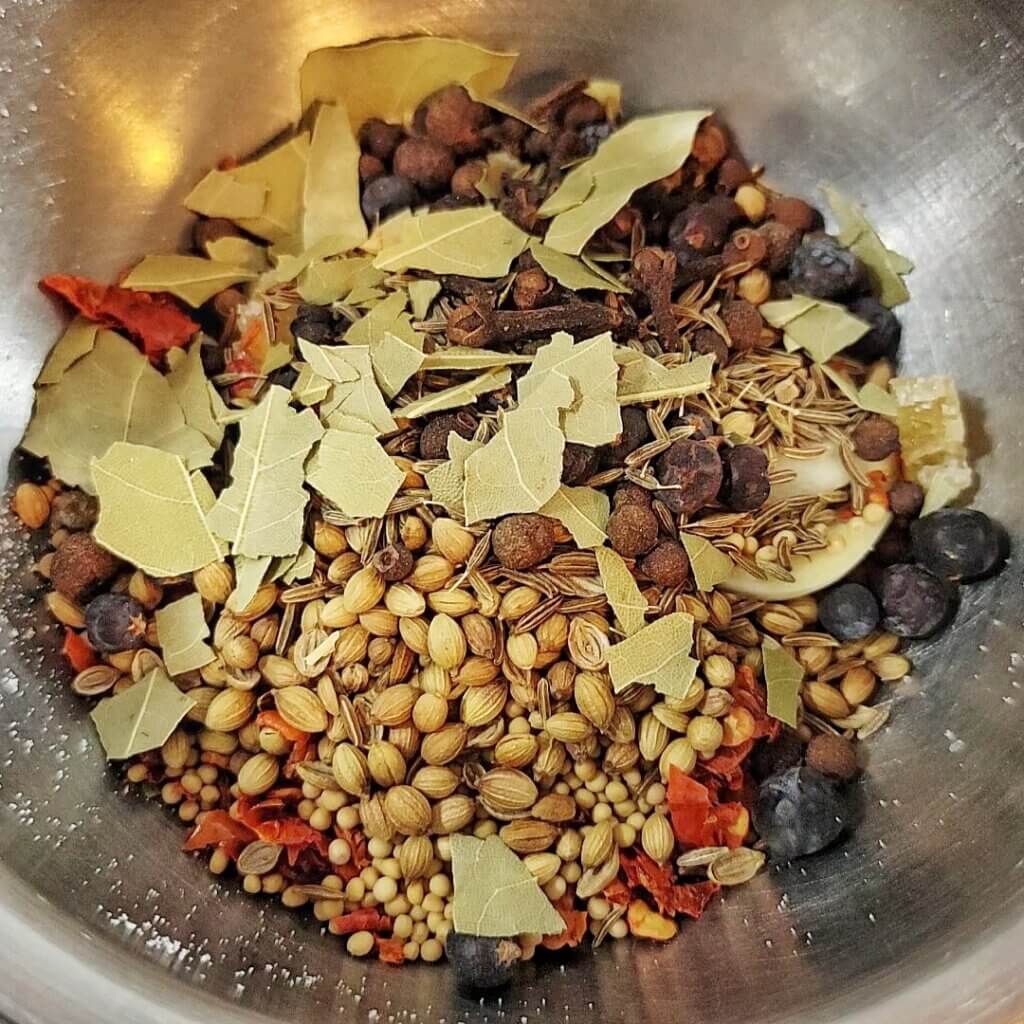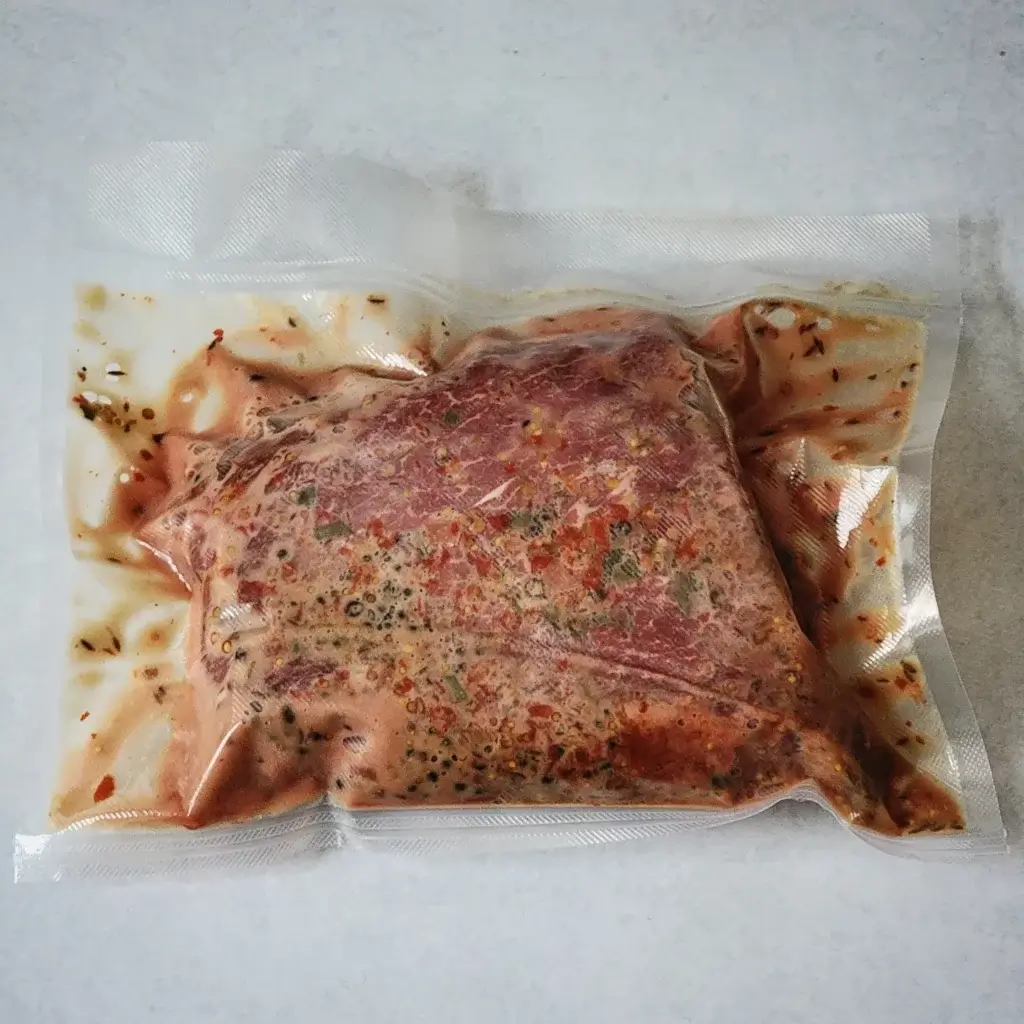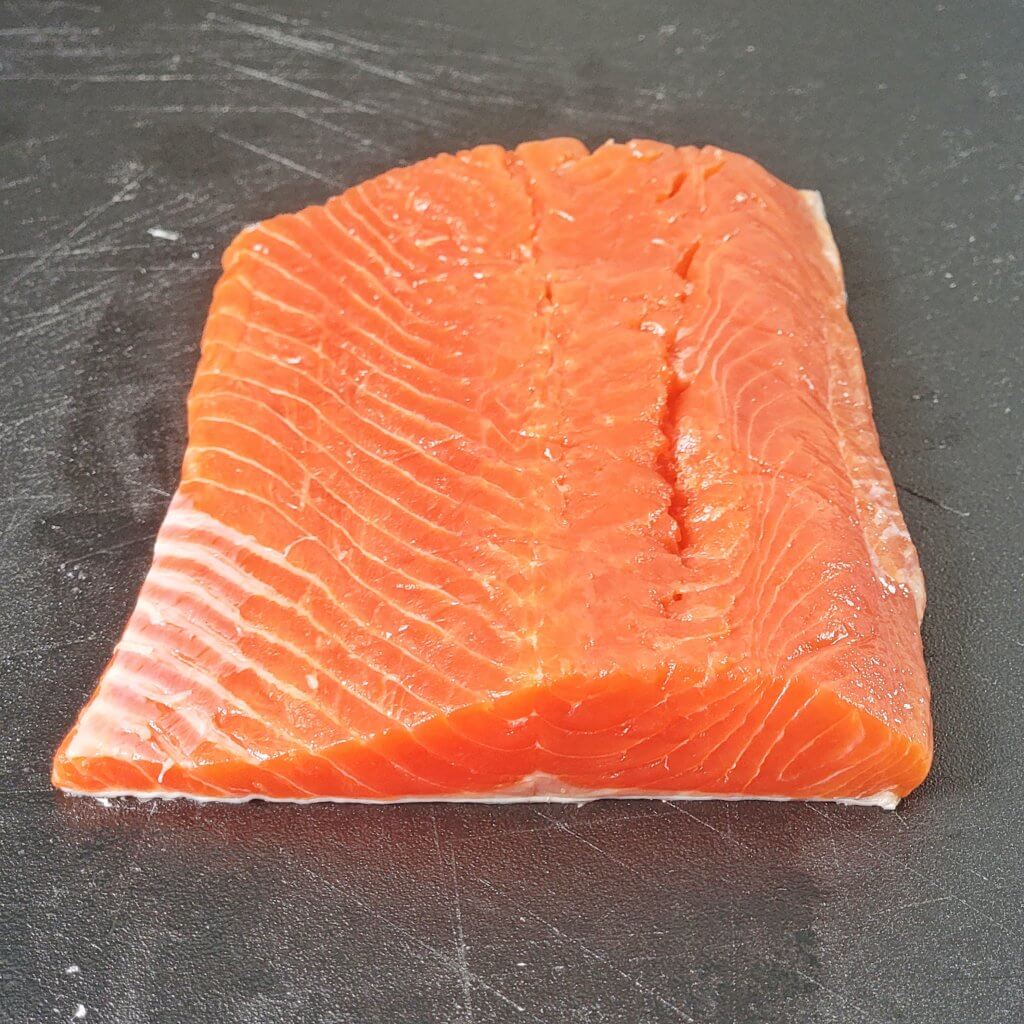Corned Beef

I’ve made corned beef a few times using the brine-in-fridge method, which turned out ok. I resisted the idea of adding nitrites, or “pink salt” (not to be confused with Himalayan pink salt, which is just colored salt) for a while, until I decided I wanted to try fermenting at basement temperature in a vacuum bag. While you can make corned beef without nitrites, it won’t have that appetizing pink color and is ultimately less safe, especially at room temperature.
Nitrites perform a very important role in meat curing, mainly the prevention of botulism. In the home environment, taking any step necessary to prevent botulism is worth it in my book.
The COVID-19 pandemic lockdowns had just started to roll out here when I found a brisket on sale and decided to “corn” it. I could not find the so-called “pink salt”, AKA Prague Powder #1, at the store, but I came across a bag of Morton’s Tender Quick. It’s a generally available curing rub meant for applications that will eventually be cooked, consisting mostly of salt and sugar with just enough nitrite in it to suit our needs.
When using pink curing salt, it must be carefully dosed into your curing rub, but if you use Tender Quick you simply replace the salt you would be using in the cure.
To Cure
Meat
- 4 lbs beef brisket
Cure
- 56 g Tender Quick (3.5–4% by weight of meat)
- 25 g brown sugar (1.5% by weight of meat)
- 5 g MSG, optional
Pickling spices
- 2 cloves garlic, crushed
- 1 tsp ginger powder or 2 tsp candied ginger
- 2 tsp dried chili flakes
- 2 bay leaves, torn up
- 1 Tbsp peppercorns
- 2 tsp mustard seed
- 2 tsp coriander seed
- 1 tsp caraway seed
- 1 tsp allspice berries
- 1 tsp juniper berries
- 1/2 tsp cloves, whole
- 1 Tbsp sauerkraut brine (or other active ferment)

Instructions
- Mix Tender Quick, brown sugar, and MSG (if using) together. Rub into the brisket well, it should mostly all stick. Insert into vacuum bag quickly before the salt starts wicking too much moisture. Be sure to add any remaining cure into the bag.
- Mix together pickling spices and dump carefully into the bag, attempting to cover all sides of the meat evenly with spices. Add the splash of active sauerkraut brine or other source of good microbes (even whey from yogurt).
- Vacuum seal and place either in the refrigerator or in a cool (<58°F/14°C) dark place (like a basement) in a suitably-sized pan or tray. You should refrigerate if using the lower end of the Tender Quick percentage range (3.5%).
- Cure for at least 10 days, or roughly 5 days per inch of thickness, flipping over once per day or so.

To Cook
Ingredients
- Corned beef brisket, rinsed to remove excess spices
- 2 bay leaves
- 1 tsp peppercorns
- 1 tsp mustard seed
- 1 tsp coriander seed
- 1 tsp caraway seed
- 1 tsp allspice berries
- 1 tsp juniper berries
- 12 oz stout beer (Guinness Extra Stout is a fine baseline)
Vegetables
- 1 lb red potatoes, quartered
- 1 large carrot, chopped
- 1 parsnip, chopped
- 1/2 cabbage, chopped into 8 wedges
Cooking Instructions
- Preheat oven to 200-225°F. The temperature depends on how fast it needs to be done: 200°F for 10 hours, or 225°F for 8 hours. You can go higher for shorter but the end result will be much less tender.
- Rinse corned beef to remove spices and pat dry.
- Set a dutch oven over medium-high heat with a small splash of oil. When hot, add the brisket fat-side-down for a few minutes to get a little color on it.
- Add the beer and enough water to barely cover the beef and bring up to a simmer. Add the whole spices in a spice pouch or tied up in cheese cloth. Once simmering, set in the preheated oven with the lid slightly open. Cook (bake?) for 8-10 hours, according to the oven temp, flipping the corned beef halfway through.
- When brisket is done and you’re ready to cook the vegetables, remove beef to a cutting board, reserve a few ladles of broth, and throw the chopped vegetables into the pot. bring up to a simmer.
- Slice the beef and arrange it in a pan that fits well over the top of the pot of veggies. Add the reserved broth, place on top of the dutch oven, and simmer for 35-40 minutes (just long enough to make some quick soda bread!).
This recipe is based on a fantastic write up by Kenji Lopez-Alt on Serious Eats. This recipe provides the Tender Quick substitute instead of dealing with curing salts, as well as percent-by-weight measurements of the cure for easy scaling.

Making corned beef from scratch is such a great way to get deep, rich flavors. Love how this recipe breaks it down step by step!